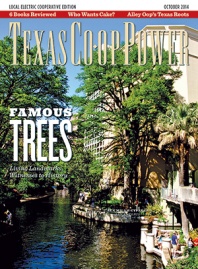America was not only a great melting pot for people; horses brought to colonial shores swirled in the pot, too, developing into specialized strains that served many purposes. One of these, the quarter horse, carried the Texas cattle industry on its broad back from the Civil War into the modern age.
Although tiny ancestors of modern-day horses left fossilized remains in North America millions of years ago, that equine species had abandoned the continent for millennia before Cortez and Columbus brought mares and stallions back in the 15th century. These went forth and multiplied, from roughly 200 in the mid-17th century to 10,000 some 20 years later. And where horses dwell, horse racing cannot be far behind.
Racing took two forms in America. “Short racing” was the entertainment of common folks who used their horses for farming, riding and driving and didn’t want to tire them out. The South’s tidewater planters, envisioning themselves akin to British aristocracy, wanted the action to last longer and preferred the 3- or 4-mile races that required thoroughbreds. Sturdy quarter running horses finished their quarter-mile races and went back to the farms and ranches instead of returning to the stable as thoroughbreds did. When pioneers set off to settle the West and Southwest, these laborers were the horses that went with them.
Steel Dust, a bay colt with a short back and compact muscular body, arrived in the Republic of Texas as a yearling before the Mexican War and came to be described as the fastest horse in Texas. In spite of poor eyesight, he won so many match races that soon no one would challenge him. His jockey rode bareback and smeared the stallion’s back and withers with blackstrap molasses to help him stay on. Admirers agreed the stallion was faster than a rush telegram on a downhill wire.
In the new frontier settlements, quarter racing was often the chief form of amusement. A level strip of prairie was the only requirement. There were few rules, although disputes over the outcome might disintegrate into blows or possibly gunshots. Bettors who lacked hard cash put up ponies, saddles, wagonloads of grain, even articles of clothing. On these short tracks, Steel Dust and his sons and daughters wrote a new chapter in equine history.
Their sire’s celebrated wins at the track made Steel Dust colts and fillies valuable property, and he was in great demand at stud, but in range country the youngsters were also highly valued as cow horses. The compact build and bulging muscles of “steeldusts,” as they sometimes were called, made them instantly recognizable, and their powerful bursts of speed put cowboys within rope-range of a renegade cow quickly. Their agility and a hard-to-describe asset that cattlemen call “cow sense” made them ideal prospects for cutting, roping and ranch work. Outcrosses to the horses of Mexican vaqueros and to Indian ponies produced tough, uniform horses of medium size that could work on the range all day and take the children for a quiet ride after supper.
During the Civil War, the Confederate cavalry rode off to battle aboard steeldust horses. No stud records have survived except by word of mouth. (Stud records from that day were incomplete at best, with such recorded statements as “Bred old Jenni to Shilow” making up many of the listings.) Steel Dust, who had been blind for years, reportedly died in 1864 at the age of 20, although conflicting stories make the truth hard to run down.
After the Civil War, steeldust horses gathered the hundreds of thousands of wild longhorns that roamed the Texas prairie and drove them up the Chisholm Trail to market, a job where being well-mounted was as important as being well-armed. The most talked-about horse in Texas in 1875 was the Denton mare, a horse of Steel Dust bloodlines that belonged to an orphaned youth from Denton County named Sam Bass. Bass acquired an interest in horse racing and rarely missed the match races at the Denton track on Sunday afternoons, and the amount of money that changed hands after these races was not lost on him.
Without the funds to finance a racehorse, he persuaded an associate to go in with him on the purchase of a speedy sorrel filly. While the mare blew by the competition on the track, Bass began getting into scrapes with other racehorse owners and barely kept ahead of disgruntled losers, one of whom claimed Bass had poisoned the drinking water of a rival horse. With the heat on, Bass sold the Denton mare in San Antonio and took up banditry.
Old Sorrel, another Steel Dust relative, populated the famous King Ranch with thousands of his colts, who proved to be unmatched cow horses. In Fort Worth, a group of interested horsemen met in 1940 and formed the American Quarter Horse Association. The AQHA’s national registry recorded for the first time the bloodlines of the stallions and mares whose ancestors had become legends. Of course, no one is surprised to learn that the AQHA’s first foundation sire, Wimpy, was a descendent of Steel Dust.
——————–
Martha Deeringer, a member of Heart of Texas EC, lives near McGregor.


